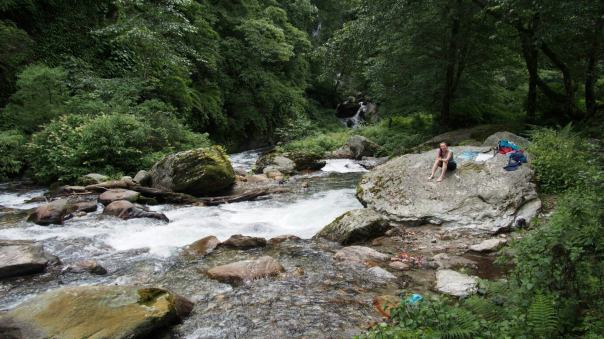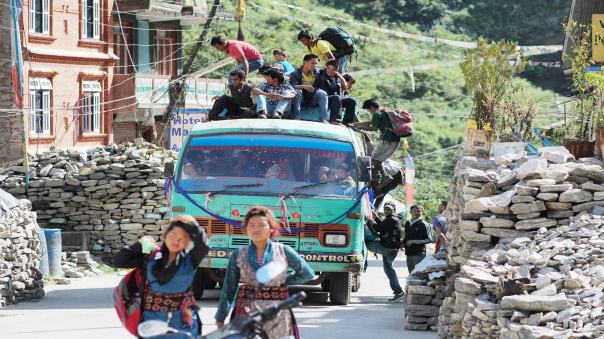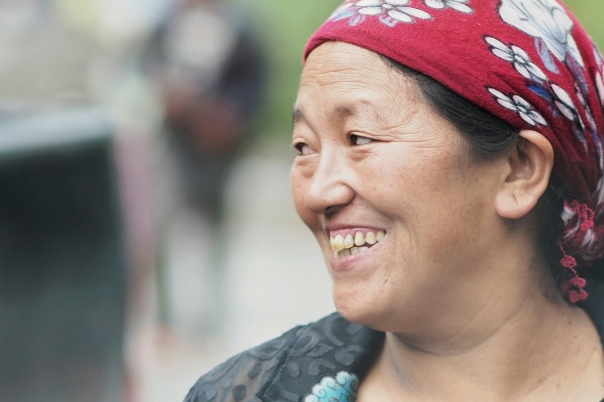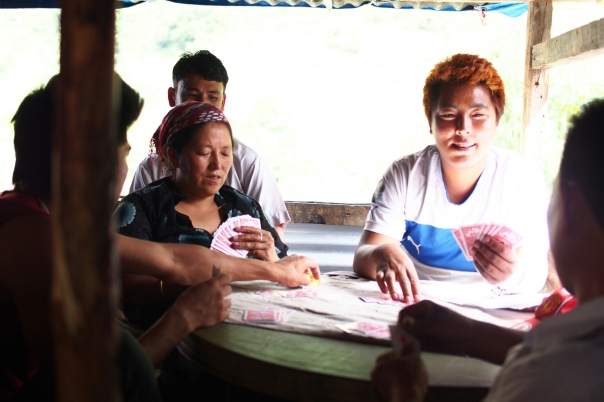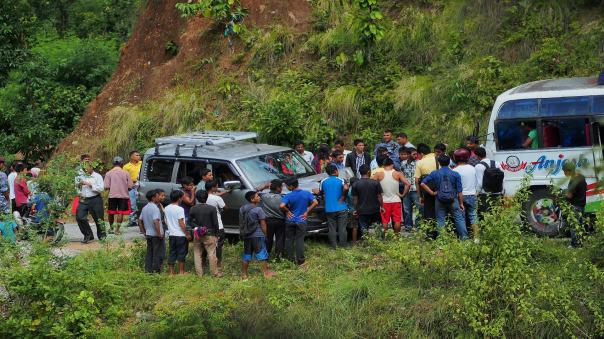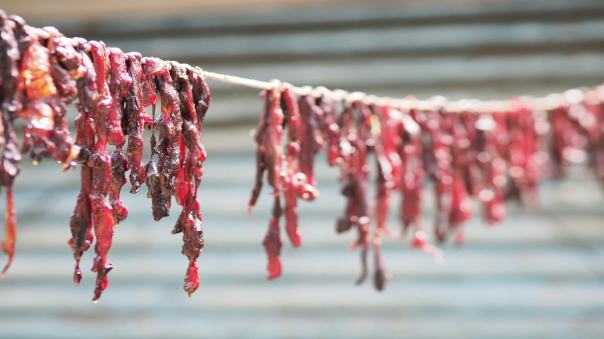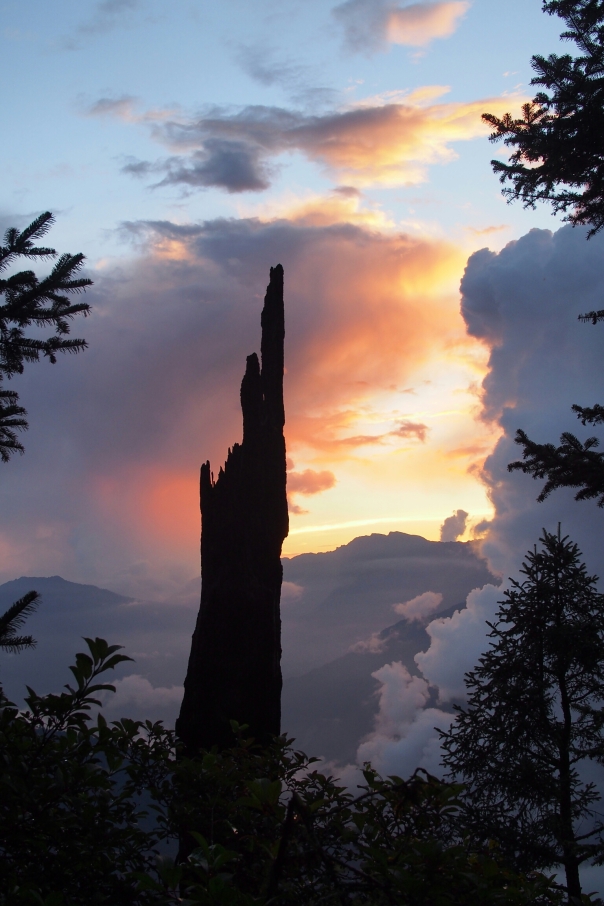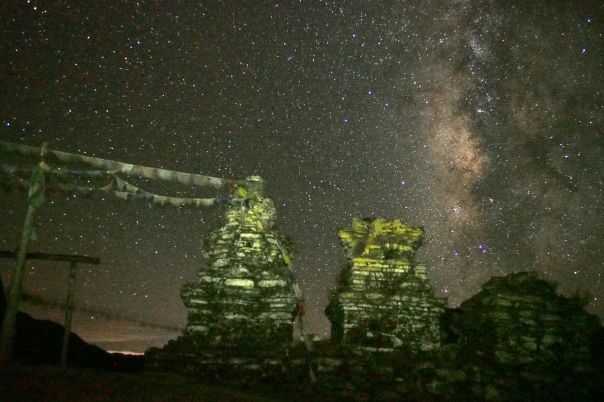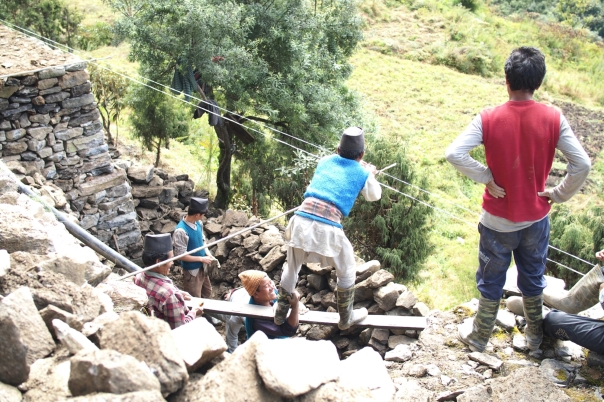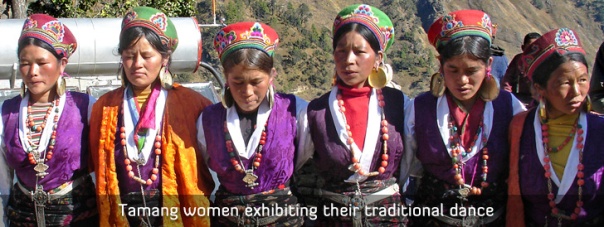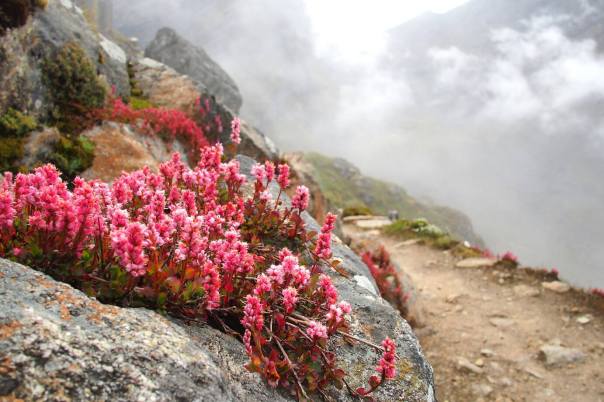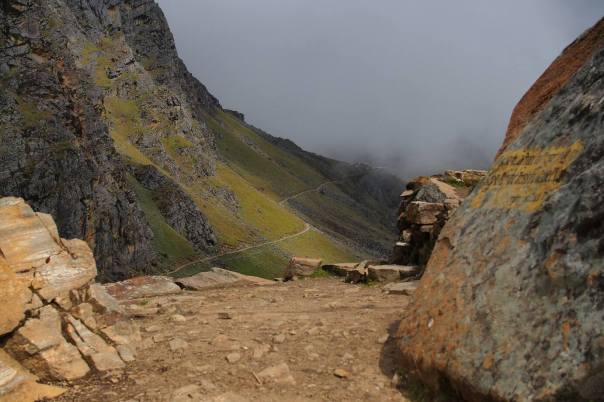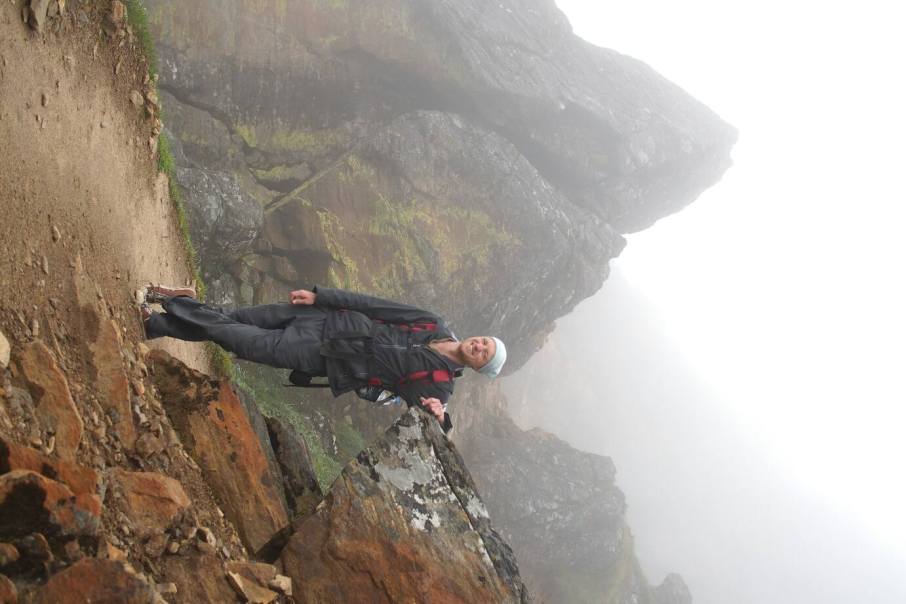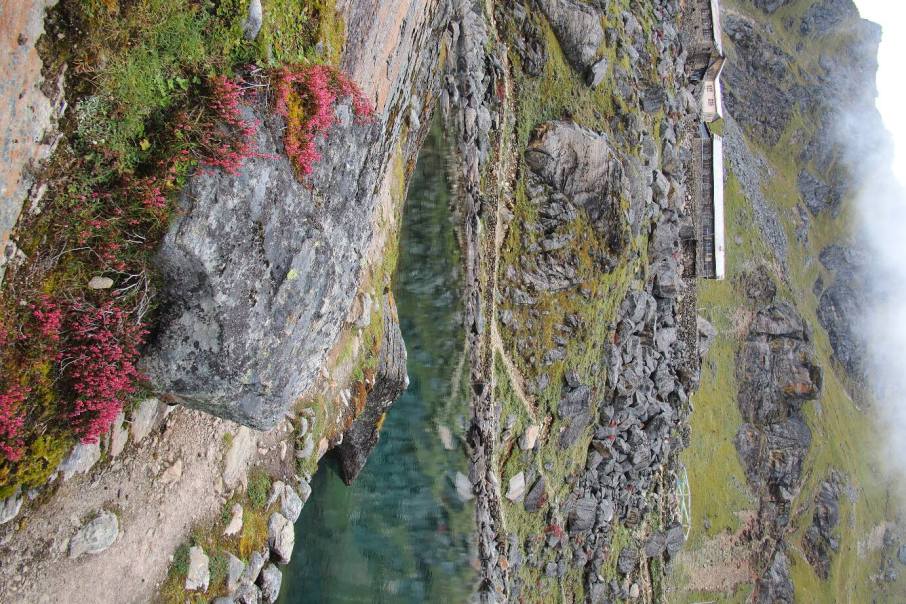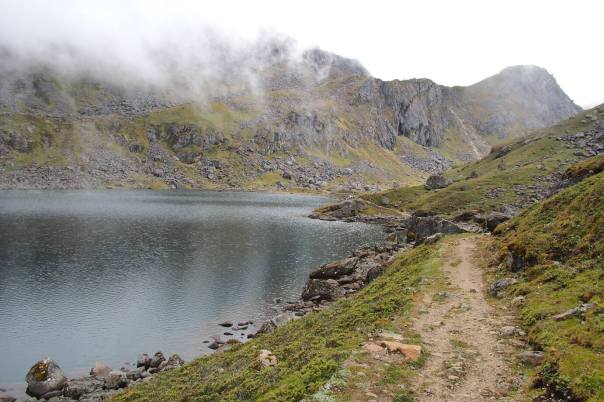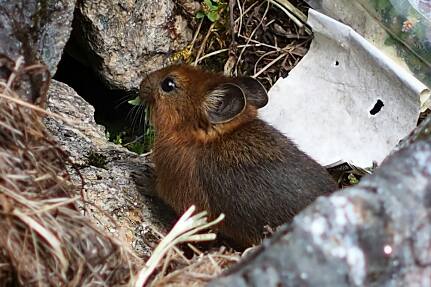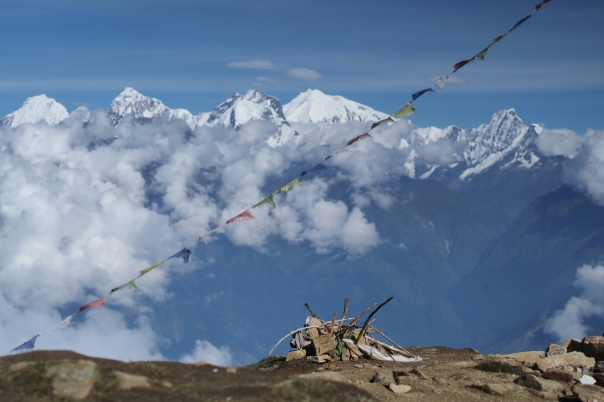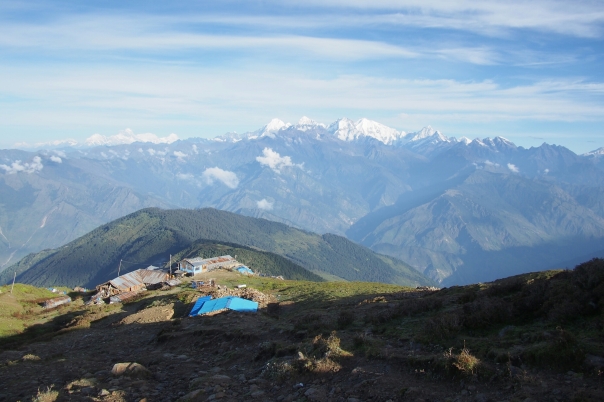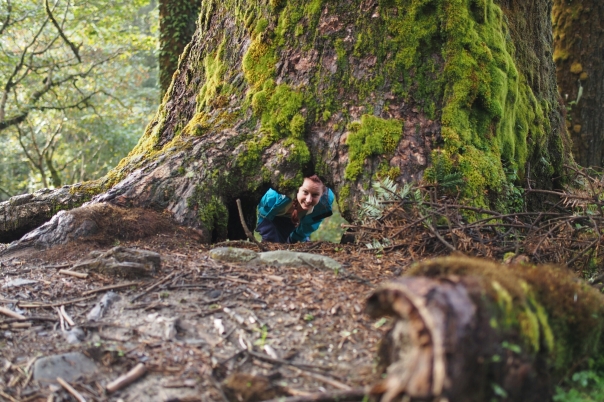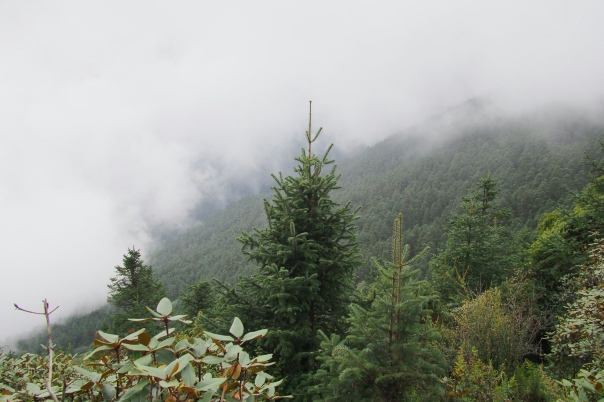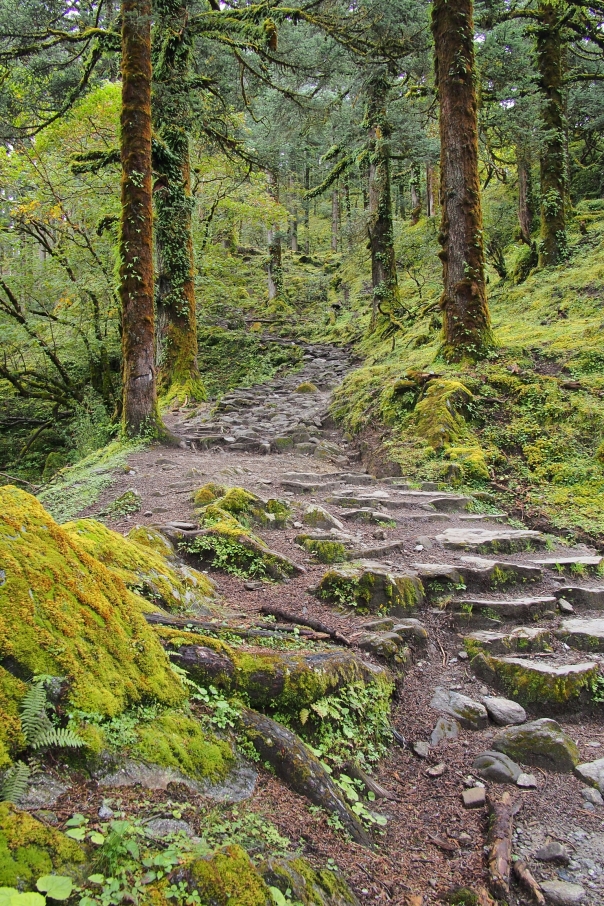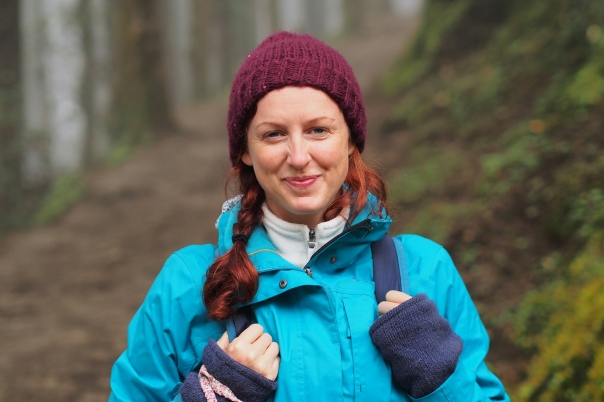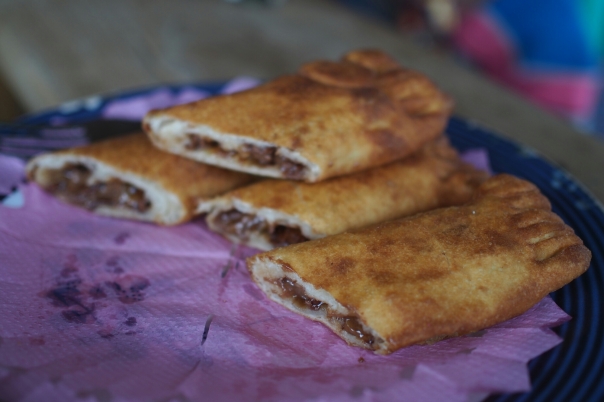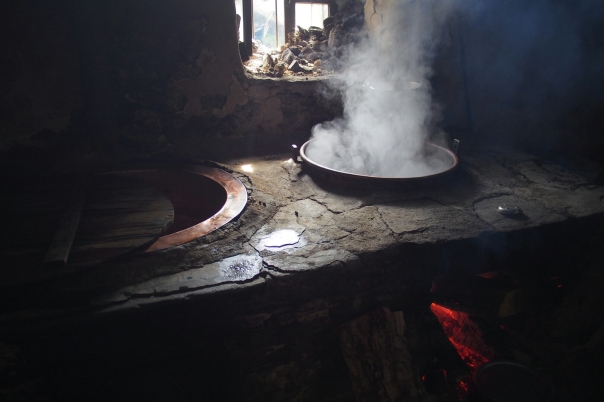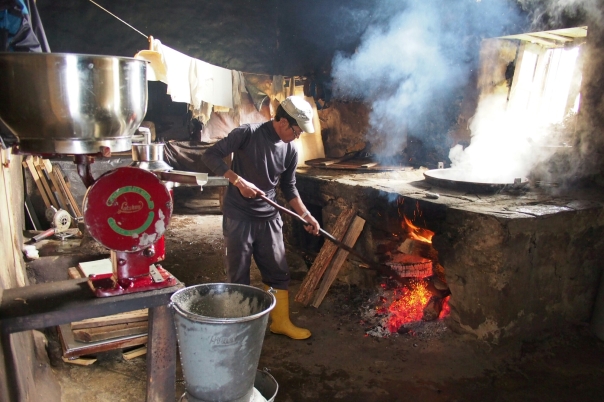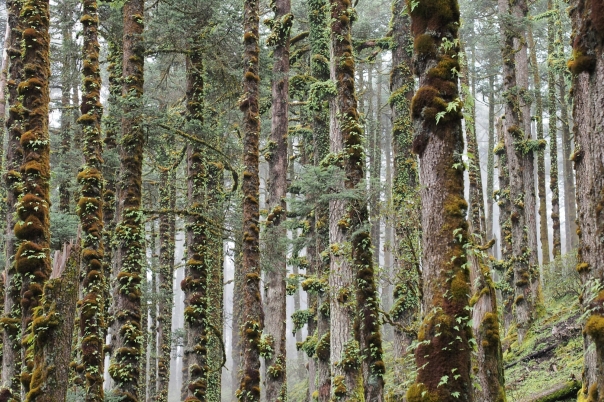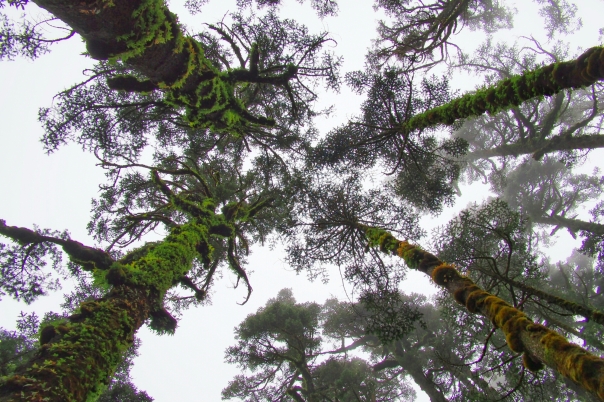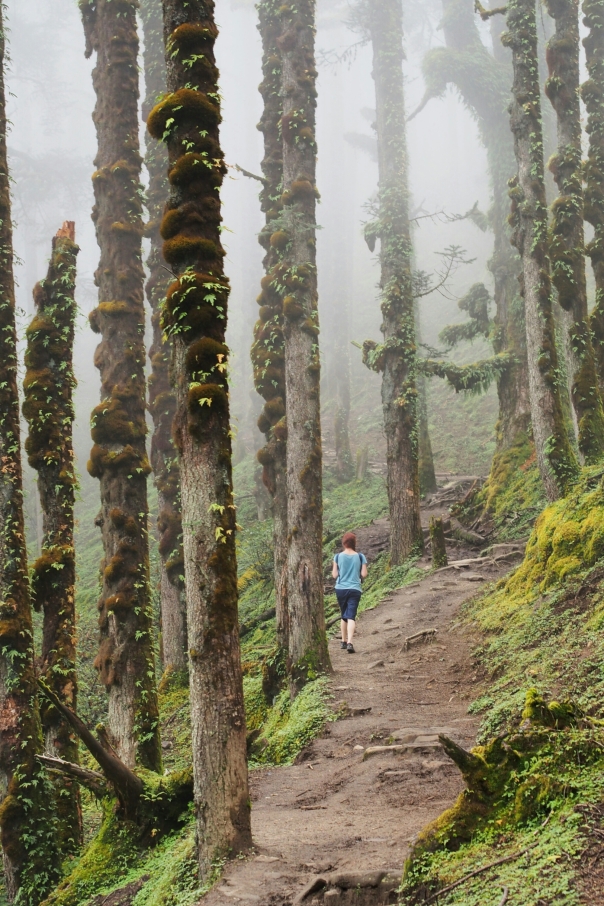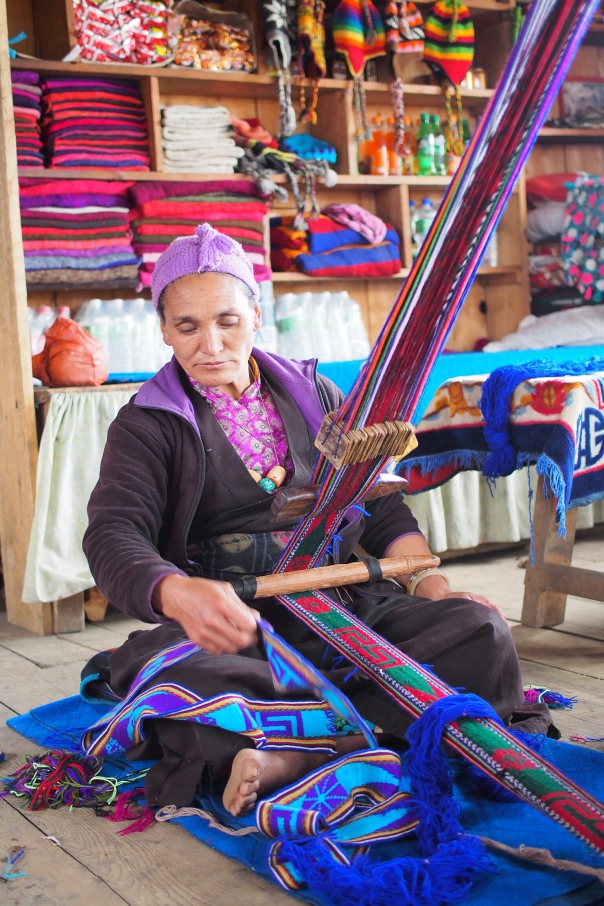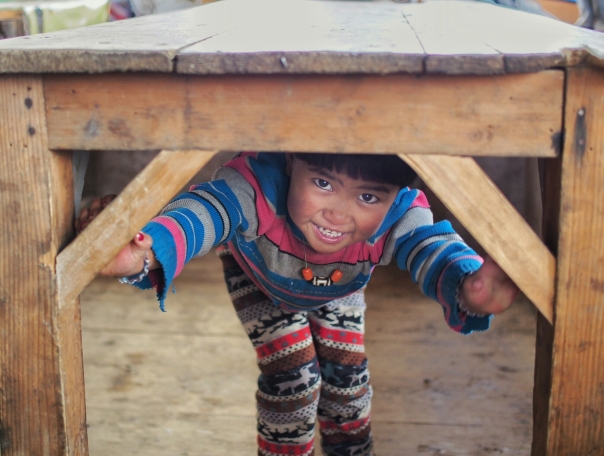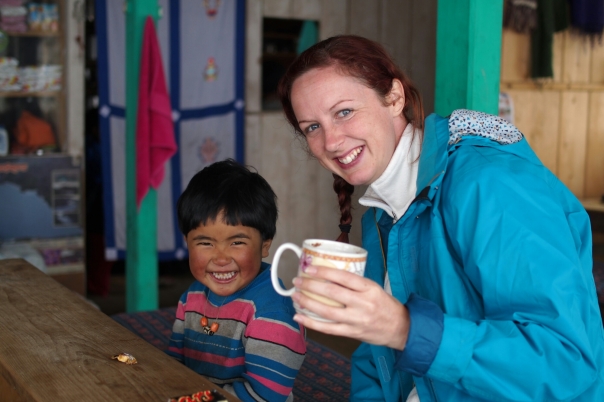Stuck between a rock and a Nepalese place…
(Written by Steph)
Today we did manage to get up, and after a brief stretch, we were off. The descent seemed to be neverending, and as we got lower, and the temperature got hotter, we were both getting impatient to reach our destination of Dunche. And then, a glorious sight – the roaring river! We weren’t stupid enough to bathe, but we managed to have a splash and a wash, and even scrub our stinky clothes!
Our plan was to rent a motorbike from Dunche for the day, and head to the next town, Syabru Besi. Nick was keen to get out on the rocky, windy mountain roads, and we figured there might be more be going on there. We would get the bus back to Kathmandu the next day, we decided. Wrong. What we weren’t banking on was the guy at the rental place being seriously disinterested in both of us, or in renting a bike at all. The quote for his most knackered bike was astronomical and he wasn’t as keen on negotiating as Nick so we cut off our noses to spite our faces and got the local bus.
Ahh, the local bus. Fun times to be had; a bit like a really terrifying fairground ride, but with the actual possibility of death. Still, we laughed through the swerving and catapulting of the vehicle, only briefly pausing to hold our breath when the tyres of the bus looked like they were actually hanging over the edge. ” I hope this place is worth it.”
The guesthouse alone was worth it. Named “Namaste,” (Nepalese greeting, and literally meaning “I see God in you”), the owner spoke better English than some of my friends (sorry if that’s you 😉 ) Here we had hot water, a double bed, an attached bathroom with a western toilet, and for the rock bottom price of 500R for the room (£3). Bargain. And a good job we liked it too…
That evening on every TV screen, people were glued to the results of the new Nepalese Constitution. Little did we know, but this had been in the making for nearly a decade, and was eagerly awaited by all parties, looking to know if, after all these years, they would finally be represented in the way they had hoped.
The bus we wanted to take would normally have left every morning. Only not the next morning. Celebrations were due to be had. So, we booked a jeep, which was definitely going. “Definitely” in Nepal terms. When we turned up at 6.45am for the 7am departure, no one seemed to know if we were going. No one actually announced this, but the lack of getting into the vehicle, coupled with lots of Nepalese chatter between the drivers and the ticket seller roused our suspicion. When pressed as to what was going on, we were told “tomorrow, ok.” This was not a rhetorical question, nor did it come with an explanation.
Panicking slightly at the fact that the only ATM in the town didn’t except visa, and having only a couple of quid to our names, we pryed as to what the situation was due to. We were even more confused when we were then told that maybe the bus would go. No one really knew. The Maoists, the rebel group that took control of most of the country in the Civil war only a decade before, were unhappy with the results of the constitution. Their way of expressing this? Apparently to attack anyone on the road, damaging vehicles and threatening lives. Our driver was too scared to risk it, even with tourists. And quite frankly, we were too. We would wait til the next day to be crammed into the jeep like sardines for the 8 hour journey…but that’s another story 😉
Footnote – thank you to Maureen for the dollars!! Luckily our guesthouse owner said she would get her father to exchange these as we were completely out of rupees and stuck! We were so thankful to have had these with us!!

